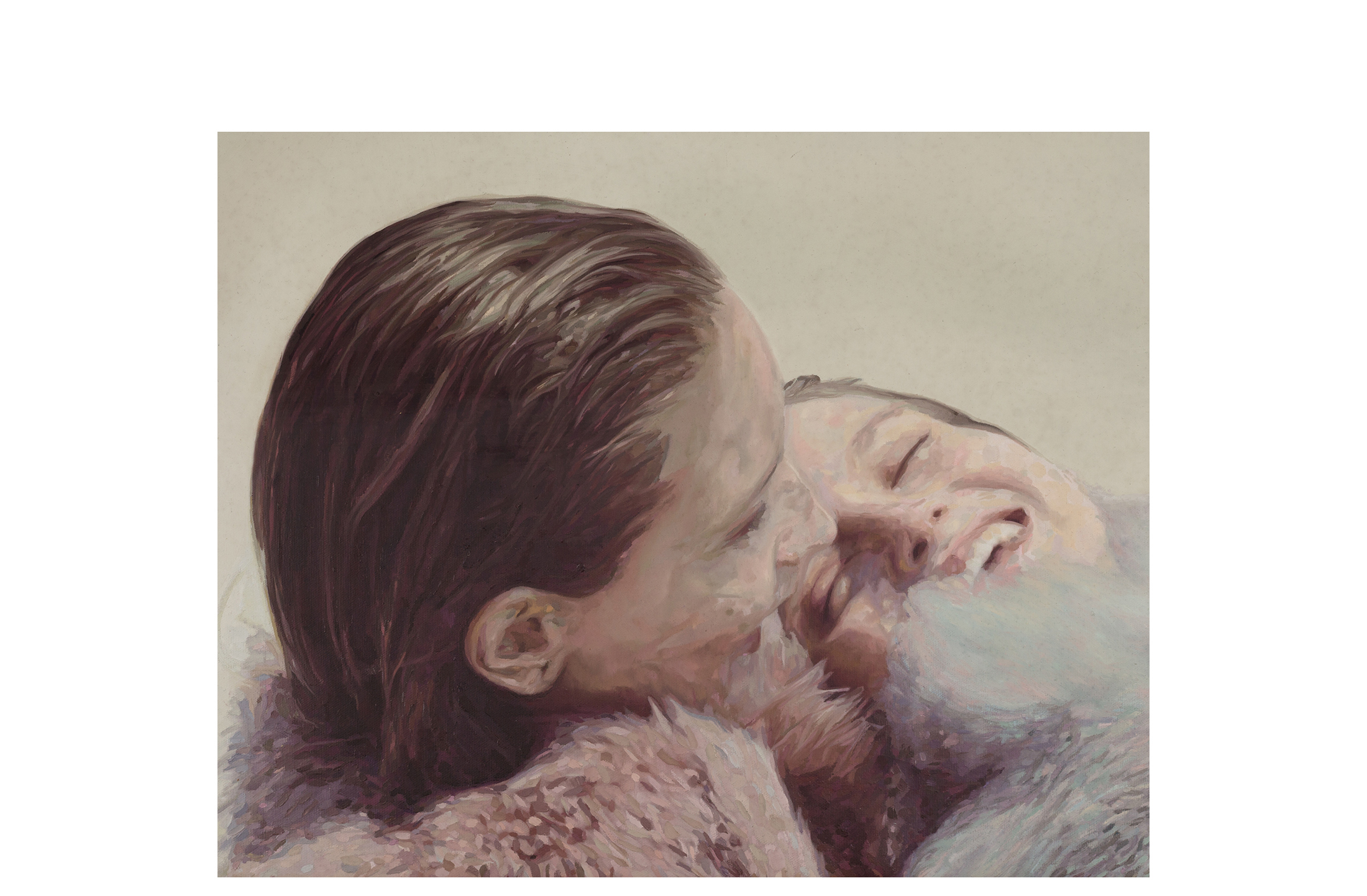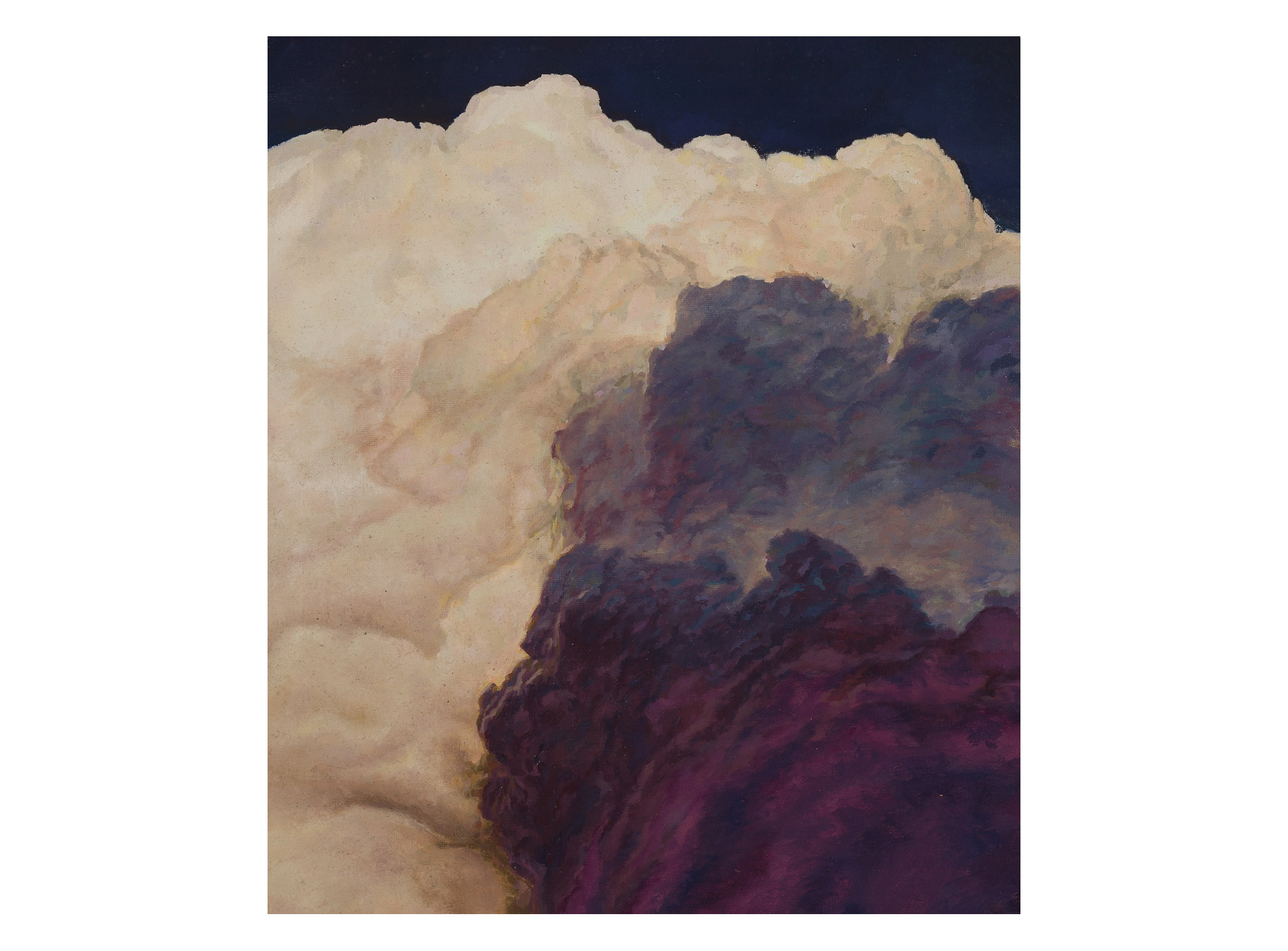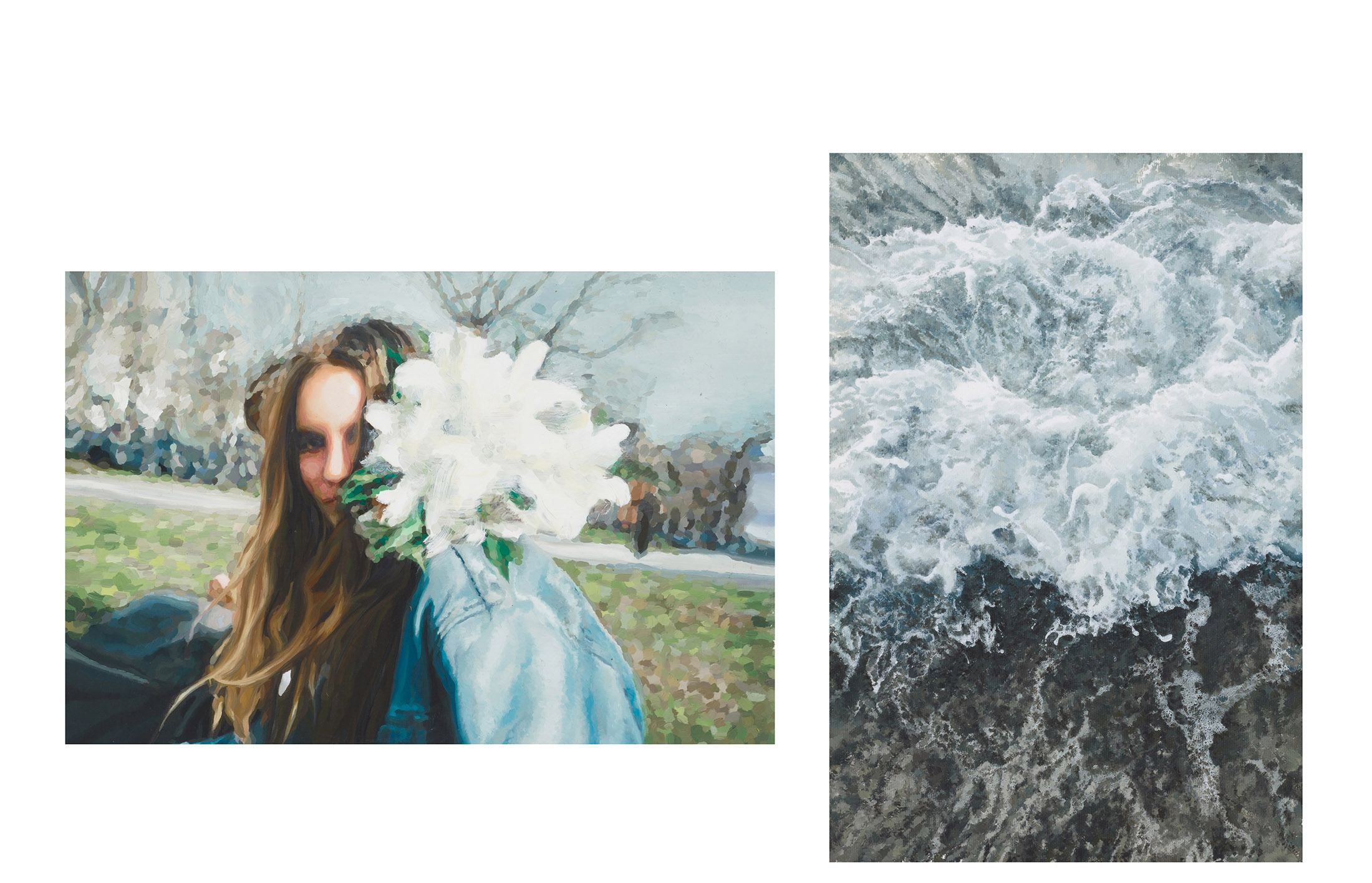Phædo
Emerald Rose Whipple:
Phædo
2017, Solo presentation in
Galerie Jan Dhaese, Ghent, BE
























Reduce the soul to its most perfect simplicity, and we find it is capable of exploration into the infinite; indeed it becomes one with the infinite. The realm of the pure and everlasting and immortal and changeless.
Socrates from Plato’s “Phædo”
Phædo is an oil on canvas painting series that showcases a renewed synthesis of Whipple’s acclaimed portraits of youth culture and dreamlike landscapes. The exhibition is comprised of thirty-one intimate paintings that represent a spiritual and philosophical progression of Whipple’s previous works. This is the artist’s third solo exhibition with Galerie Jan Dhaese, the previous shows include Eden in 2015 and Genesis: Let There Be Light shown at VOLTA NY (Booth D4) in 2016.
The images used in Phædo are sourced directly from Whipple’s own experience through a close dialogue with the subjects, many of whom are her contemporaries in the fashion industry. In an age where images are disposable, Whipple bestows a meditative and candid documentation of the subject’s lives consistent with her art direction background. Whipple’s utilization of millennial social-media ready content, paired with sweeping landscapes longing for the cinematic style of Terrence Malick or Julian Schnabel, is anchored in a traditional artistic medium. This fusion of beauty, landscape, and tradition compliments the transcendent journey of the subject.
Phædo’s portrait paintings include one self-portrait of the artist as well as friends - Lindsey Wixson (The Society Management), Lindsey Hoover (New York Model Management), Dorothea Barth-Jörgensen (The Lions), Amanda Nørgaard (IMG), Sarah Lee Jordan (Elite), Michael Bruno (Women Management), Bogdan Seredyak (Photographer), Nina De Raadt (Ford), Bekim Trenova (Ford), Donovan McClenton, Douglas Schubert, Katelyn Greene, Daniel Gaines (Art + Commerce), Mirte Mass (Women), Sara Blomqvist (DNA), Kasia Strusinska (Women), Begum Yasar, Tilda Lindstam (IMG), Iona Schafer & Kevin Schafer.
Although similar in stylistic content from previous exhibitions, Whipple shifts the subject of her paintings in tone, temperament and demeanor. Phædo’s subjects are contemplative and sophisticated, more so than previous exhibitions, though the narrative aspects of the paintings still hover between the reality and utopia of boundless youth set in divine paradise. Whipple’s landscapes and settings are inspired by sacred spaces of devotional experience in awe-inspiring locations both internal and external.
The exhibit’s title, Phædo, is the artist’s homage to Socrates as quoted by Plato in a dialogue centered on the transmigration of the soul and the infinite interconnectedness of life. For the artist, the juxtaposition of the human form and the natural landscape acts as a bridge between the material realm and divinity. Whipple expresses this duality by linking portraiture and nature. The portraiture marks our human experience and makes pure communion with the divine immortal soul through nature.
Phædo is curated to exemplify reincarnation, specifically the transmigration of the sou, as the portraits flow into the landscapes. The paintings both speak about Whipple’s intent as well as the function of viewer experience. Transmigration as explained by Socrates, and as intended by Whipple, distributes souls through the stirrings and strivings of beings. That is to say, the soul migrates across body to body, from the divine and returns to the divine. It is an all-encompassing light. It is a remembrance that transcends the individual mortal life amid the broader travels of the soul. Life is remembering a pathway for an active exploration and return to the divine. The soul’s search for meaning in life and death are one of the more profound themes in Whipple's larger body of work and a concept oft confronted historically.
Phædo reveals a search for meaning, which is boundless and infinite, by documenting the journey of the soul as an incarnate figure and then as pure natural wonder. The paintings explore the tension of reality, grappling with the duality of the material world in pursuit of the divine where the viewer holds witness to the elegant transmigration of the soul. Our soul serves as the essential bridge between these two worlds, the immortal and the world of becoming.
Formally, Whipple distorts the conventional pictorial field by compressing the foreground and background by altering the perceived depth of the spaces in which the figures exist. The paintings are a blend of figuration and abstraction that incorporate classical genres including early 20th century Impressionism, and 16th century portraiture techniques of the old masters. The viewer can see an evolution in style from earlier works as the artist utilizes transparent layering of paint with fluid and blended brushstrokes.
By combining modern images from her life with traditional oil painting techniques, the artist underscores the everlasting boundless knowledge found within the universal soul. Art itself is a research practice. It is both the investigation of self and the world outside of the self. Whipple paints idealized states of being from personal and shared experiences where she imbues these philosophical ideas to inspire the viewers to elevate their own consciousness, ideals, hope and potential.
